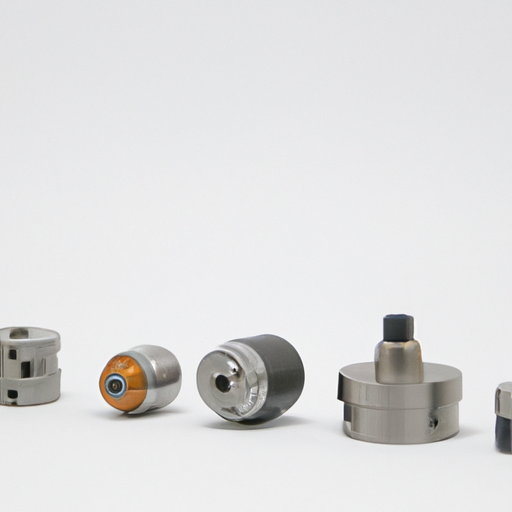

Encoders are essential components in various industries, providing precise and accurate measurements of position, speed, and direction. They are used in a wide range of applications, from robotics and automation to medical devices and aerospace. Encoders come in different types and configurations, each designed for specific purposes. In this article, we will explore the key product categories of encoders and their applications.

There are two main types of optical encoders: incremental and absolute. Incremental encoders provide relative position information, while absolute encoders provide absolute position information. Both types are available in various configurations, including rotary and linear encoders.
2. Magnetic Encoders: Magnetic encoders use magnets and magnetic sensors to measure the position of a rotating shaft. They are known for their durability and resistance to dust, dirt, and other environmental factors. Magnetic encoders are commonly used in harsh industrial environments, such as steel mills, paper mills, and mining operations.
There are two main types of magnetic encoders: rotary and linear. Rotary magnetic encoders measure the angular position of a shaft, while linear magnetic encoders measure the linear position of a moving object. Magnetic encoders are also available in incremental and absolute configurations, providing flexibility for different applications.
3. Capacitive Encoders: Capacitive encoders use capacitive sensors to measure the position of a moving object. They are known for their high resolution and accuracy, making them ideal for applications that require precise positioning, such as semiconductor manufacturing and precision machining.
Capacitive encoders are available in rotary and linear configurations, providing flexibility for different applications. They are also resistant to dust, dirt, and other environmental factors, making them suitable for harsh industrial environments.
4. Inductive Encoders: Inductive encoders use inductive sensors to measure the position of a moving object. They are known for their robustness and reliability, making them ideal for applications that require high durability, such as automotive manufacturing and heavy machinery.
Inductive encoders are available in rotary and linear configurations, providing flexibility for different applications. They are also resistant to shock, vibration, and other mechanical stresses, making them suitable for harsh industrial environments.
5. Ultrasonic Encoders: Ultrasonic encoders use ultrasonic sensors to measure the position of a moving object. They are known for their non-contact measurement capability, making them ideal for applications that require contactless positioning, such as medical imaging and robotics.
Ultrasonic encoders are available in rotary and linear configurations, providing flexibility for different applications. They are also resistant to dust, dirt, and other environmental factors, making them suitable for harsh industrial environments.
In conclusion, encoders are essential components in various industries, providing precise and accurate measurements of position, speed, and direction. They come in different types and configurations, each designed for specific purposes. Whether you need high resolution and accuracy, durability and reliability, or non-contact measurement capability, there is an encoder available to meet your requirements. By understanding the key product categories of encoders and their applications, you can choose the right encoder for your specific needs.
Encoders are essential components in various industries, providing precise and accurate measurements of position, speed, and direction. They are used in a wide range of applications, from robotics and automation to medical devices and aerospace. Encoders come in different types and configurations, each designed for specific purposes. In this article, we will explore the key product categories of encoders and their applications.

There are two main types of optical encoders: incremental and absolute. Incremental encoders provide relative position information, while absolute encoders provide absolute position information. Both types are available in various configurations, including rotary and linear encoders.
2. Magnetic Encoders: Magnetic encoders use magnets and magnetic sensors to measure the position of a rotating shaft. They are known for their durability and resistance to dust, dirt, and other environmental factors. Magnetic encoders are commonly used in harsh industrial environments, such as steel mills, paper mills, and mining operations.
There are two main types of magnetic encoders: rotary and linear. Rotary magnetic encoders measure the angular position of a shaft, while linear magnetic encoders measure the linear position of a moving object. Magnetic encoders are also available in incremental and absolute configurations, providing flexibility for different applications.
3. Capacitive Encoders: Capacitive encoders use capacitive sensors to measure the position of a moving object. They are known for their high resolution and accuracy, making them ideal for applications that require precise positioning, such as semiconductor manufacturing and precision machining.
Capacitive encoders are available in rotary and linear configurations, providing flexibility for different applications. They are also resistant to dust, dirt, and other environmental factors, making them suitable for harsh industrial environments.
4. Inductive Encoders: Inductive encoders use inductive sensors to measure the position of a moving object. They are known for their robustness and reliability, making them ideal for applications that require high durability, such as automotive manufacturing and heavy machinery.
Inductive encoders are available in rotary and linear configurations, providing flexibility for different applications. They are also resistant to shock, vibration, and other mechanical stresses, making them suitable for harsh industrial environments.
5. Ultrasonic Encoders: Ultrasonic encoders use ultrasonic sensors to measure the position of a moving object. They are known for their non-contact measurement capability, making them ideal for applications that require contactless positioning, such as medical imaging and robotics.
Ultrasonic encoders are available in rotary and linear configurations, providing flexibility for different applications. They are also resistant to dust, dirt, and other environmental factors, making them suitable for harsh industrial environments.
In conclusion, encoders are essential components in various industries, providing precise and accurate measurements of position, speed, and direction. They come in different types and configurations, each designed for specific purposes. Whether you need high resolution and accuracy, durability and reliability, or non-contact measurement capability, there is an encoder available to meet your requirements. By understanding the key product categories of encoders and their applications, you can choose the right encoder for your specific needs.